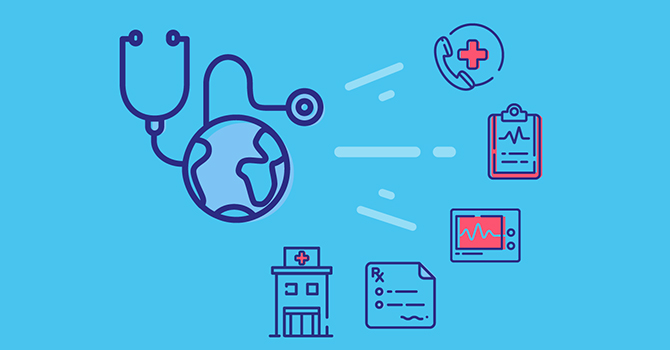Comprehensive Healthcare RCM for Improving Individual Billing and Settlements
Comprehensive Healthcare RCM for Improving Individual Billing and Settlements
Blog Article
A Comprehensive Overview on Just How Health Care RCM Works to Enhance Billing and Collections
Navigating the complexities of health care profits cycle monitoring (RCM) is essential for providers aiming to enhance their payment and collections procedures. The guide unloads the details of RCM, from client registration to balance dues monitoring, providing understandings into enhancing each action. Incorporating sophisticated technology and standard treatments can dramatically decrease insurance claim denials and speed up payment cycles. Yet, the real difficulty hinges on flawlessly merging these aspects to enhance capital. As we check out the core components and methods that drive effectiveness, one concern remains: how can healthcare entities ideal placement themselves to thrive monetarily in an ever-evolving market?
Understanding Earnings Cycle Administration
Understanding the details of Income Cycle Administration (RCM) is important for health care organizations aiming to enhance their economic performance. RCM is an important management feature that includes the entire monetary process of patient care, from the preliminary appointment establishing to the final settlement of the balance. It is an intricate treatment designed to recognize, gather, and handle the revenue from the solutions given to patients. Reliable RCM ensures that doctor obtain accurate and prompt settlements, decreasing the danger of profits loss and improving capital.
The RCM process starts when a client routines a visit and expands via the client's treatment journey, consisting of payment and collections. A crucial objective is to minimize the time in between giving a service and getting settlement, therefore improving the company's economic wellness. RCM involves different functions such as individual registration, insurance coverage verification, cost capture, coding, claims entry, payment uploading, and handling rejections and appeals.
Trick Parts of RCM
In the world of Income Cycle Administration (RCM), comprehending its vital components is essential to achieving financial performance within healthcare companies. RCM is a detailed process that encompasses different phases, each essential to making sure efficient billing and collections. The primary components consist of person registration, insurance policy confirmation, charge capture, coding, claim entry, payment publishing, and receivable management.


Once coded, cases are submitted to payers, where accuracy is critical to stay clear of hold-ups or denials - Healthcare RCM. Settlement posting includes taping the gotten repayments, which allows for the reconciliation of accounts. Lastly, receivables monitoring concentrates on tracking and dealing with overdue insurance claims, guaranteeing timely follow-up and resolution
Each element of RCM is adjoined, and inefficiencies in any kind of part can interrupt the whole cycle. Consequently, grasping these components is vital for doctor to maximize revenue and improve their economic health.
Techniques for Effective Invoicing

Standardizing invoicing procedures throughout the company is one more key strategy. Establishing clear standards for documents, coding, and entry assists preserve consistency and compliance with regulative needs. Educating team consistently on these procedures makes sure everybody is updated with the latest changes in billing codes and payer plans.
Precise fee capture is necessary in preventing earnings leak. Applying regular audits and monitoring systems permits the identification and correction of disparities before they affect earnings. Furthermore, preserving open lines of interaction with payers assists to rapidly settle any type of disagreements or misunderstandings that might emerge.

Finally, engaging people early in the payment procedure by giving clear quotes and instructional materials concerning their financial duties can significantly reduce complication and boost repayment timeliness. These techniques collectively add to a more economically healthy and reliable invoicing system.
Enhancing Collections Processes
A durable collections process is vital for keeping monetary stability within medical care companies. Provided the complexities of clinical payment my explanation and the selection of payer demands, enhancing the collections process includes applying critical steps that guarantee accurate and prompt payment of services provided. Central to this is using modern technology to automate and enhance procedures, minimizing hand-operated errors and enhancing performance. Automation devices can aid in tracking case standings, sending out prompt pointers to patients, and taking care of denials better.
Transparent and clear patient communications are vital. Supplying thorough explanations of costs and providing flexible settlement strategies can raise client contentment and prompt repayments.
Routine audits of the collections procedure should be carried out to identify areas for improvement and make certain conformity with guidelines. By evaluating information, medical care companies can recognize patterns, anticipate prospective issues, and adjust methods as necessary (Healthcare RCM). Ultimately, a well-enhanced collections procedure not only supports financial health but also adds to a much more smooth experience for people and personnel alike
Optimizing Earnings Streams
Building upon the foundation of a solid collections process, health care companies can better reinforce their monetary stability by purposefully enhancing profits streams. This includes a multi-faceted strategy, starting with a thorough evaluation of existing profits resources to determine inefficiencies and areas for growth. Employing advanced information analytics tools makes it possible for organizations to obtain understandings have a peek here right into payer mix, individual demographics, and solution application patterns, permitting for data-driven decisions that boost profits capture.
Carrying out automated billing systems can significantly lower mistakes and speed up cases refining, making sure that revenue is accumulated much more successfully. Furthermore, optimizing payer contracts through regular arrangements can enhance compensation prices and terms, directly affecting the bottom line. Branching out solution offerings, such as including telehealth or health care, can additionally attract a broader client base, hence enhancing earnings capacity.
An additional vital element is improving client involvement and complete satisfaction, as pleased patients are more probable to follow therapy plans and make prompt settlements. Using versatile settlement options and transparent payment methods can enhance collections and foster patient loyalty. Healthcare RCM. By taking on these approaches, health care organizations can create an extra durable economic framework, ensuring continual growth and stability in an ever-changing sector landscape
Final Thought
Finally, medical care Profits Cycle Management (RCM) plays a crucial duty in optimizing billing and collections processes by integrating vital components such as patient registration, insurance coverage verification, cost capture, coding, claims submission, and accounts receivable administration. By employing sophisticated innovation, standardizing treatments, and promoting individual interaction, health care companies can substantially decrease case rejections, increase repayment cycles, and enhance capital. This extensive strategy to RCM eventually results in enhanced economic effectiveness and sustainability for health care companies.
The RCM procedure begins when an individual timetables a consultation and expands through the client's care journey, consisting of billing and collections.An additional crucial element is improving individual engagement and satisfaction, as completely satisfied people are much more most likely to adhere to treatment plans and make prompt settlements. Using flexible settlement options and transparent payment methods can improve collections and foster person loyalty.In verdict, health care Profits browse around this web-site Cycle Management (RCM) plays an important duty in optimizing billing and collections processes by integrating essential parts such as person enrollment, insurance verification, fee capture, coding, claims submission, and accounts receivable management. By employing advanced modern technology, standardizing procedures, and fostering person engagement, health care service providers can substantially reduce case denials, accelerate payment cycles, and enhance cash money circulation.
Report this page